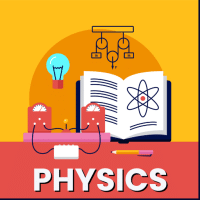JEE Exam > JEE Questions > SECTION III : Multiple Correct Answer(s) Type...
Start Learning for Free
SECTION III : Multiple Correct Answer(s) Type
The section contains 6 multiple choice questions. Each question has four choices (A), (B), (C) and (D) out of which ONE or MORE are correct.
Q. The reversible expansion of an ideal gas under adiabatic and isothermal conditions is shown in the figure.
Which of the following statement(s) is (are) correct?
Which of the following statement(s) is (are) correct?
- a)T1 = T2
- b)T3 > T1
- c)wisothermal > wadiabatic
- d)ΔUisothermal > ΔUadiabatic
Correct answer is option 'A,C,D'. Can you explain this answer?
Most Upvoted Answer
SECTION III : Multiple Correct Answer(s) TypeThe section contains 6 mu...
T1 = T2 because process is isothermal.
Work done in adiabatic process is less than in isothermal process because area covered by isothermal curve is more than the area co vered by the adiabatic curve.
In adiabatic process expansion occurs by using internal energy hence it decreases while in isothermal process temperature remains constant that’s why no change in internal energy.

|
Explore Courses for JEE exam
|

|
Similar JEE Doubts
Question Description
SECTION III : Multiple Correct Answer(s) TypeThe section contains 6 multiple choice questions. Each question has four choices (A), (B), (C) and (D) out of whichONE or MORE are correct.Q. The reversible expansion of an ideal gas under adiabatic and isothermal conditions is shown in the figure.Which of the following statement(s) is (are) correct?a)T1 = T2b)T3 > T1c)wisothermal > wadiabaticd)ΔUisothermal > ΔUadiabaticCorrect answer is option 'A,C,D'. Can you explain this answer? for JEE 2025 is part of JEE preparation. The Question and answers have been prepared according to the JEE exam syllabus. Information about SECTION III : Multiple Correct Answer(s) TypeThe section contains 6 multiple choice questions. Each question has four choices (A), (B), (C) and (D) out of whichONE or MORE are correct.Q. The reversible expansion of an ideal gas under adiabatic and isothermal conditions is shown in the figure.Which of the following statement(s) is (are) correct?a)T1 = T2b)T3 > T1c)wisothermal > wadiabaticd)ΔUisothermal > ΔUadiabaticCorrect answer is option 'A,C,D'. Can you explain this answer? covers all topics & solutions for JEE 2025 Exam. Find important definitions, questions, meanings, examples, exercises and tests below for SECTION III : Multiple Correct Answer(s) TypeThe section contains 6 multiple choice questions. Each question has four choices (A), (B), (C) and (D) out of whichONE or MORE are correct.Q. The reversible expansion of an ideal gas under adiabatic and isothermal conditions is shown in the figure.Which of the following statement(s) is (are) correct?a)T1 = T2b)T3 > T1c)wisothermal > wadiabaticd)ΔUisothermal > ΔUadiabaticCorrect answer is option 'A,C,D'. Can you explain this answer?.
SECTION III : Multiple Correct Answer(s) TypeThe section contains 6 multiple choice questions. Each question has four choices (A), (B), (C) and (D) out of whichONE or MORE are correct.Q. The reversible expansion of an ideal gas under adiabatic and isothermal conditions is shown in the figure.Which of the following statement(s) is (are) correct?a)T1 = T2b)T3 > T1c)wisothermal > wadiabaticd)ΔUisothermal > ΔUadiabaticCorrect answer is option 'A,C,D'. Can you explain this answer? for JEE 2025 is part of JEE preparation. The Question and answers have been prepared according to the JEE exam syllabus. Information about SECTION III : Multiple Correct Answer(s) TypeThe section contains 6 multiple choice questions. Each question has four choices (A), (B), (C) and (D) out of whichONE or MORE are correct.Q. The reversible expansion of an ideal gas under adiabatic and isothermal conditions is shown in the figure.Which of the following statement(s) is (are) correct?a)T1 = T2b)T3 > T1c)wisothermal > wadiabaticd)ΔUisothermal > ΔUadiabaticCorrect answer is option 'A,C,D'. Can you explain this answer? covers all topics & solutions for JEE 2025 Exam. Find important definitions, questions, meanings, examples, exercises and tests below for SECTION III : Multiple Correct Answer(s) TypeThe section contains 6 multiple choice questions. Each question has four choices (A), (B), (C) and (D) out of whichONE or MORE are correct.Q. The reversible expansion of an ideal gas under adiabatic and isothermal conditions is shown in the figure.Which of the following statement(s) is (are) correct?a)T1 = T2b)T3 > T1c)wisothermal > wadiabaticd)ΔUisothermal > ΔUadiabaticCorrect answer is option 'A,C,D'. Can you explain this answer?.
Solutions for SECTION III : Multiple Correct Answer(s) TypeThe section contains 6 multiple choice questions. Each question has four choices (A), (B), (C) and (D) out of whichONE or MORE are correct.Q. The reversible expansion of an ideal gas under adiabatic and isothermal conditions is shown in the figure.Which of the following statement(s) is (are) correct?a)T1 = T2b)T3 > T1c)wisothermal > wadiabaticd)ΔUisothermal > ΔUadiabaticCorrect answer is option 'A,C,D'. Can you explain this answer? in English & in Hindi are available as part of our courses for JEE.
Download more important topics, notes, lectures and mock test series for JEE Exam by signing up for free.
Here you can find the meaning of SECTION III : Multiple Correct Answer(s) TypeThe section contains 6 multiple choice questions. Each question has four choices (A), (B), (C) and (D) out of whichONE or MORE are correct.Q. The reversible expansion of an ideal gas under adiabatic and isothermal conditions is shown in the figure.Which of the following statement(s) is (are) correct?a)T1 = T2b)T3 > T1c)wisothermal > wadiabaticd)ΔUisothermal > ΔUadiabaticCorrect answer is option 'A,C,D'. Can you explain this answer? defined & explained in the simplest way possible. Besides giving the explanation of
SECTION III : Multiple Correct Answer(s) TypeThe section contains 6 multiple choice questions. Each question has four choices (A), (B), (C) and (D) out of whichONE or MORE are correct.Q. The reversible expansion of an ideal gas under adiabatic and isothermal conditions is shown in the figure.Which of the following statement(s) is (are) correct?a)T1 = T2b)T3 > T1c)wisothermal > wadiabaticd)ΔUisothermal > ΔUadiabaticCorrect answer is option 'A,C,D'. Can you explain this answer?, a detailed solution for SECTION III : Multiple Correct Answer(s) TypeThe section contains 6 multiple choice questions. Each question has four choices (A), (B), (C) and (D) out of whichONE or MORE are correct.Q. The reversible expansion of an ideal gas under adiabatic and isothermal conditions is shown in the figure.Which of the following statement(s) is (are) correct?a)T1 = T2b)T3 > T1c)wisothermal > wadiabaticd)ΔUisothermal > ΔUadiabaticCorrect answer is option 'A,C,D'. Can you explain this answer? has been provided alongside types of SECTION III : Multiple Correct Answer(s) TypeThe section contains 6 multiple choice questions. Each question has four choices (A), (B), (C) and (D) out of whichONE or MORE are correct.Q. The reversible expansion of an ideal gas under adiabatic and isothermal conditions is shown in the figure.Which of the following statement(s) is (are) correct?a)T1 = T2b)T3 > T1c)wisothermal > wadiabaticd)ΔUisothermal > ΔUadiabaticCorrect answer is option 'A,C,D'. Can you explain this answer? theory, EduRev gives you an
ample number of questions to practice SECTION III : Multiple Correct Answer(s) TypeThe section contains 6 multiple choice questions. Each question has four choices (A), (B), (C) and (D) out of whichONE or MORE are correct.Q. The reversible expansion of an ideal gas under adiabatic and isothermal conditions is shown in the figure.Which of the following statement(s) is (are) correct?a)T1 = T2b)T3 > T1c)wisothermal > wadiabaticd)ΔUisothermal > ΔUadiabaticCorrect answer is option 'A,C,D'. Can you explain this answer? tests, examples and also practice JEE tests.

|
Explore Courses for JEE exam
|

|
Signup to solve all Doubts
Signup to see your scores go up within 7 days! Learn & Practice with 1000+ FREE Notes, Videos & Tests.





















